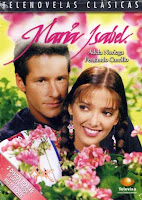
The Caribbean is an enchanting place full of life and mucho savor—or a lot of flavor. The island of Puerto Rico is one of the many islands in the Caribbean Sea which was first established by Spanish conquistadors, but stands today as a self-governing Commonwealth territory of the United States.
Known as La Isla del Encanto, or The Island of Enchantment, Puerto Rico is a unique country full of vibrant culture that comes alive through its music and dance.
With strong ties to its African, Taino, and Spanish roots, two of the most popular and practiced traditional dances or folklores in the island are the Bomba and the Plena. These two traditional dances are derived from the unique music that also holds the same names as the dances. Bomba music is composed of African rhythms and beats through the use of barrel shaped drums and sticks. This dance is “described as a dialogue between [the] dancer and [the] drummer” where each play and move to dueling rhythmic beats as if challenging each other. In most dances, the man is the musician and the woman plays the role of the challenger or seductress.
 Plena music derives from a mix of Spanish and Taino rhythms through the use of instruments from such cultures, such as the Spanish guitar and the guiro. As this style of music emerged through the island during more colonial times, people used music as a means of communicating recent news, stories, and even rumors. The Plena is a more structured and conservative dance with strong Spanish ties within the movements. It is normally danced in couples and in many cases the dancers portray what the lyrics are expressing.
Plena music derives from a mix of Spanish and Taino rhythms through the use of instruments from such cultures, such as the Spanish guitar and the guiro. As this style of music emerged through the island during more colonial times, people used music as a means of communicating recent news, stories, and even rumors. The Plena is a more structured and conservative dance with strong Spanish ties within the movements. It is normally danced in couples and in many cases the dancers portray what the lyrics are expressing.
In Puerto Rico today, there is a variety of music and dance that have established themselves into the culture, yet “Bomba y Plena remain the most popular forms of folk music on the island, and many cultural events highlight this music for entertainment.”

Puerto Rico has a rich culture in dance, but the most popular are by far the Merengue, Cha-Cha, Salsa, Plena and Bomba.
Merengue: Adapted from the Dominican Republic, this style has two variations. The ballroom Merengue is a basic two-step with a twist of the hip during which the couple never separates. The Figure Merengue involves the couple making individual turns.
http://www.youtube.com/watch?v=P_cbIgK_OLc
Cha-Cha: Based on the mambo, it was named for the sounds of the dancers' feet when performing this. It involves three quick steps (the triple step or simply the cha-cha-cha) followed by two slow steps on the next two beats.
http://www.youtube.com/watch?v=Uc_jOljHgWI&feature=related
Salsa: The word denotes a fusion, and the dance is a mixture of several Latin and Afro-Caribbean dances. Salsa is danced in a pattern of six steps over eight counts of music. Turns are very important in this dance.
http://www.youtube.com/watch?v=C7IwkLcHeBI
Plena: The Plena is simple and although it is danced in pairs, its evident it was originally a solo dance. Some are very fast paced, accompanied by the drums.
http://www.youtube.com/watch?v=0ZO6Rsl6mWw
Bomba: This provides the foundation for the rhythm of the Bomba genre of music. Developed by west african slaves to celebrate marriages, baptisms and other occasions it is danced in pairs without contact (unlike most of the other popular dances). The dancers perform fast steps called floretea piquetes, challenging the drums and musicians that accompany them.
http://www.youtube.com/watch?v=_RfPjGOfrr0

 Another very popular music style is reggaeton. Although originally from Panamá, this music dance genre has grown in popularity throughout the
Another very popular music style is reggaeton. Although originally from Panamá, this music dance genre has grown in popularity throughout the  mbow.” Later on in the 1980s, urban youth in Puerto Rico began to catch wave of this music because of the hip-hop and reggae beats and reggaeton became popular in
mbow.” Later on in the 1980s, urban youth in Puerto Rico began to catch wave of this music because of the hip-hop and reggae beats and reggaeton became popular in
http://latinmusic.about.com/od/genres/p/PRO019BASIC.htm
http://www.topuertorico.org/culture/







